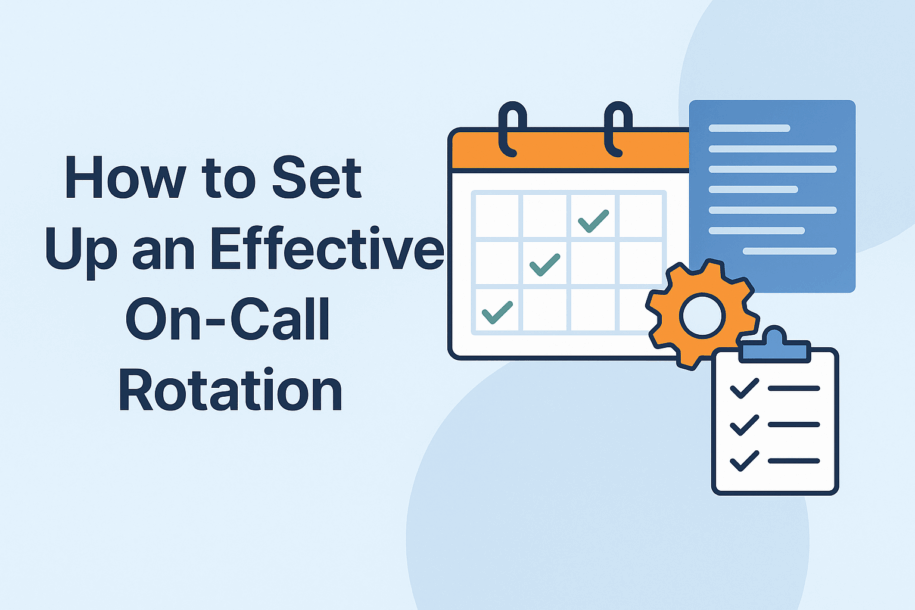An effective on-call rotation is crucial for providing outstanding customer support and incident response, especially for startups and small teams. Yet, many businesses find it challenging to implement a schedule that’s both fair and efficient.
This article explains step-by-step how to build a successful on-call schedule that reduces burnout, increases responsiveness, and boosts customer satisfaction.
Why Your Business Needs an On-Call Rotation
Without a structured on-call rotation, incidents often go unresolved or escalate unnecessarily, leading to poor customer experiences. A clear rotation helps teams manage responsibility evenly, reducing stress and improving service quality.
A properly managed schedule ensures your business consistently meets customer expectations while protecting team well-being.
Step-by-Step Guide: Creating Your On-Call Rotation
1. Identify Your Team’s Coverage Needs
Start by clearly identifying the coverage hours needed. Will you provide 24/7 support or limited after-hours coverage? Determine when your customers are most active, and structure your rotation accordingly.
For further insights on effective scheduling, see our blog on how to simplify on-call scheduling for small teams.
2. Choose the Right Rotation Length
Decide whether daily, weekly, or bi-weekly rotations work best. Shorter rotations reduce fatigue, while longer rotations simplify scheduling. Match your rotation length to your team size and workload.
3. Clearly Define Escalation Paths
Establish clear escalation policies to handle incidents efficiently. Everyone on-call should know precisely whom to contact next if an issue isn’t resolved promptly.
Learn more about this by reading our post on best practices for effective escalation management.
4. Select a Scheduling Tool
Use an affordable tool like Support Oasis to streamline your rotation. Unlike tools such as PagerDuty or Opsgenie, Support Oasis offers a cost-effective solution ideal for SMBs.
5. Set Clear Expectations and Responsibilities
Clearly communicate expectations to your team. Everyone should understand response time requirements, escalation triggers, and what constitutes an urgent issue.
Common Challenges of an On-Call Rotation (and Solutions!)
Avoiding Burnout in Your On-Call Rotation
Burnout is a common problem. Prevent this by offering sufficient downtime between rotations, ensuring workloads are manageable, and regularly checking in with team members.
Ensuring Coverage During Holidays and Vacations
Holidays and vacations can disrupt schedules. Prepare in advance by clearly communicating holiday rotations and assigning backups proactively.
Managing Unexpected Absences
Unexpected absences occur. Have clear procedures in place for switching or trading shifts to ensure continuous coverage.
How Support Oasis Makes Your On-Call Rotation Easier
Support Oasis simplifies your scheduling by providing an all-in-one, easy-to-use solution that includes:
- Visual scheduling
- Automatic escalation rules
- Integrated email-based ticketing
- Affordable pricing
Discover how Support Oasis compares to other tools in our detailed cost comparison between Zendesk & PagerDuty vs. Support Oasis.
Final Thoughts: Optimize Your On-Call Rotation Now
Creating an effective on-call rotation doesn’t have to be complicated. With clear planning, the right tools, and good communication, your team can deliver exceptional support consistently.
Ready to simplify your scheduling and improve your team’s efficiency?

